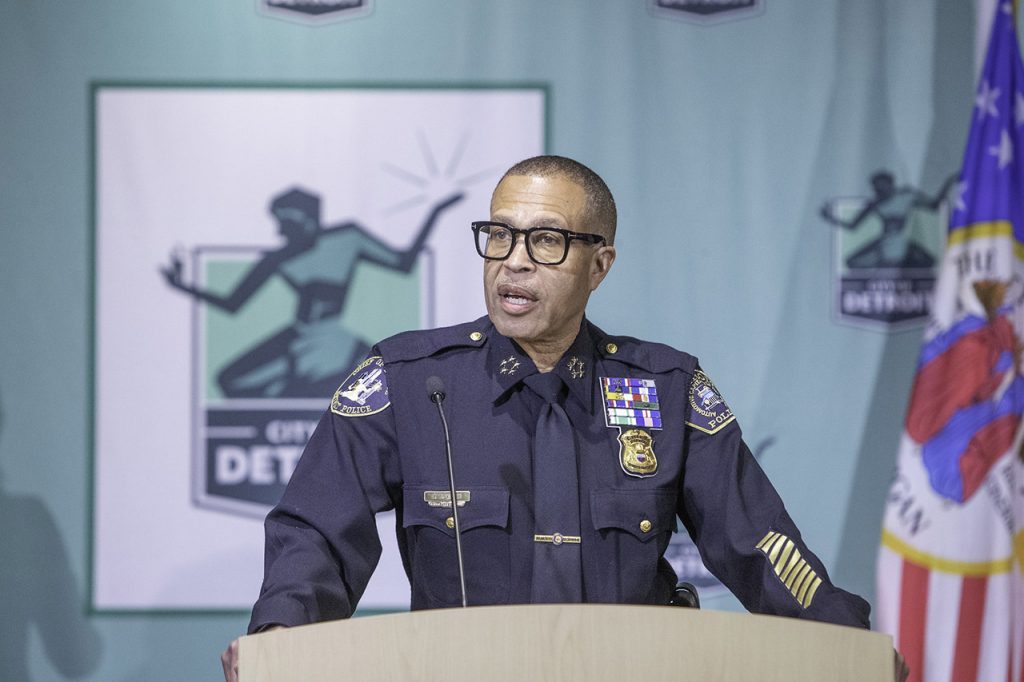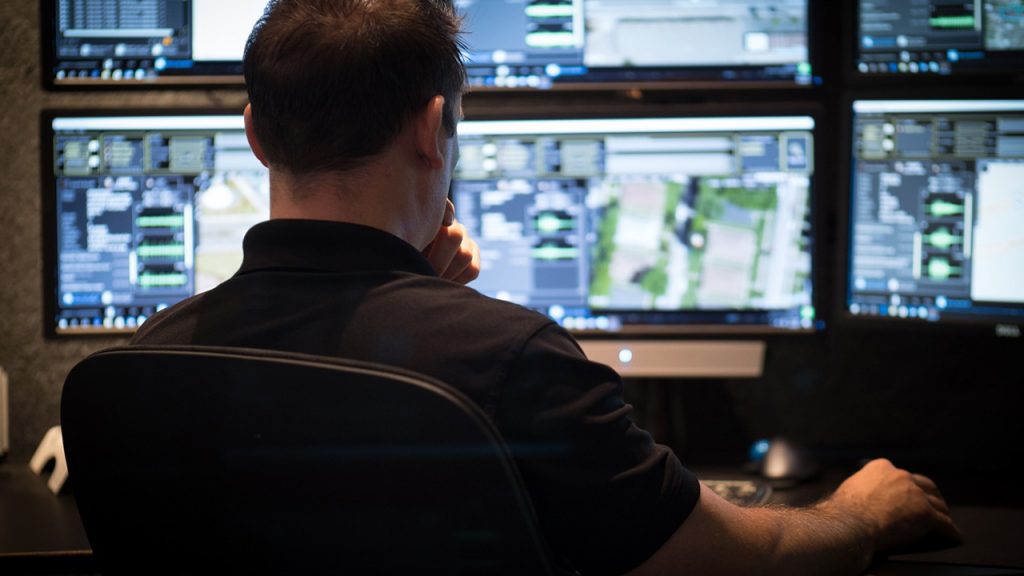Tracked and Traced: Does ShotSpotter prevent violent crime in Detroit?
Bryce Huffman February 16, 2022In this episode of Tracked and Traced, Bryce Huffman investigates the scope and effectiveness of ShotSpotter in Detroit. Then, Jonathan Manes of the MacArthur Justice Center at Northwestern University shares the findings of a report on ShotSpotter’s widespread use in Chicago.

Listen and subscribe to Tracked and Traced:
Apple Podcast — Spotify — NPR — Stitcher — Google PodcastsCorrection: The originally published version of this story incorrectly stated that ShotSpotter has not been independently verified for accuracy, and that ShotSpotter Inc. did not provide WDET with evidence of the technology’s accuracy. In fact, ShotSpotter did provide WDET with a link to an audit performed by a consulting firm that they commissioned. The audit used data supplied by ShotSpotter Inc. and confirmed ShotSpotter’s claim that the technology is 97% accurate. However, the source data was not included in the audit. Also, while reporting this story, the Detroit Police Department told WDET that ShotSpotter works within a roughly 100-yard radius. ShotSpotter Inc. says the technology works within an 82-foot radius. The Detroit Police Department uses several surveillance technologies to monitor criminal activity throughout the city. Things like facial recognition technology and Project Green Light have generated some controversy in the city over the past few years, but many Detroiters are still unaware of another surveillance system: ShotSpotter. The ShotSpotter system uses microphones and sensors to identify the sound of gunfire and in real time give the police roughly an 82-foot radius for where the sound came from. ShotSpotter commissioned a consulting firm to audit their technology. Using data supplied by ShotSpotter, the audit confirmed shotspotter’s claim that the system accurately identifies gunfire 97% of the time. Other reports have disputed the accuracy of the system, questioning whether sounds similar to gunshots like fireworks or a car backfiring can alert the system. In March 2021, former Detroit Police Chief James Craig boasted of the early success of the system. “We deployed on Monday afternoon, we went live with ShotSpotter, on the east side of Detroit. within 24 hours, we got a hit,” Craig said during a press conference. This hit allowed the police to arrest two known gang members and stop a criminal operation.

Detroit police say ShotSpotter has helped reduce crime
Now ShotSpotter is being used exclusively in a 6-square-mile radius in small sections of Detroit’s far west and east-side neighborhoods. The populations of both neighborhoods are overwhelmingly Black. Thanks to an agreement made between DPD and ShotSpotter Incorporated, no police or city officials know exactly where the microphones and sensors are located. How has ShotSpotter been used since it launched in March? LeValley says DPD has officers working “around the clock” focusing on using the ShotSpotter system. “We found that by having them readily available to respond, we’re able to get there quickly, make some arrests, we’ve issued tickets, and taken quite a few illegal firearms off the streets.” Within the first nine months of Detroit police launching ShotSpotter, they made 64 arrests using ShotSpotter alerts as evidence. The department also recovered more than 200 firearms and collected casings from 683 locations within the area ShotSpotter operates.“We found that by having them readily available to respond, we’re able to get there quickly, make some arrests, we’ve issued tickets, and taken quite a few illegal firearms off the streets.” —David LeValley, Detroit Police DepartmentBut that’s not all. LeValley says the department has seen a slight difference in the number of shootings in the areas within the 8th and 9th precincts that have ShotSpotter and those that don’t. LeValley says ShotSpotter’s impact doesn’t just involve gun-related crimes though. “Most of the violent crime has gone down in the ShotSpotter areas because there’s a lot of other aggravated assaults that involve weapons and we’re just seeing less use of weapons in those areas,” he said. But police have provided little evidence to back up that claim. DPD has not responded to a Freedom of Information Act request for the total number of ShotSpotter alerts they received and the number of officer deployments based on those alerts. The department also hasn’t given a number of criminal convictions made based on ShotSpotter.
Activists raise civil rights concerns
Despite the success Detroit police say they have seen with ShotSpotter, the technology has many critics. Not all of whom are actually Detroiters. Joe Stanley is a Senior Policy Analyst with the American Civil Liberties Union — or ACLU. He says he has many concerns with ShotSpotter. “One of those concerns is that ShotSpotter is deployed overwhelmingly in communities of color,” Stanley said, “which already often have troubled relationships with the police, which disproportionately bear the brunt of a heavy police presence, and which are offered often sort of simultaneously overpoliced and underpoliced.” Stanley says this is problematic because police often harass and intimidate residents of these communities disproportionately compared to people in whiter and more affluent neighborhoods. “Here you have a system that sends police running into neighborhoods of color, often on high alert and ready for a situation that involves a gun, and many of those alerts are false alarms,” he said. “So, in that sense, many communities have been concerned that ShotSpotter is exacerbating existing problems between policing communities.”
“A lot of our residents in the community are not aware of what ShotSpotter is. There haven’t been enough public discussions or any public discussions for that matter about the technology, the harms and dangers of this technology.” —Willie Burton, Board of Police CommissionersTransparency activists say it’s common for police departments around the country to keep residents in the dark when it comes to surveillance technology like ShotSpotter. Chad Marlow is the Senior Policy Counsel at the ACLU. He says there is a safeguard against this practice. In Detroit it’s called the Community Input Over Government Surveillance — or CIOGS — ordinance, which makes any discussion around spending public money on or using surveillance technology more open and transparent. Marlow said the ordinance provides public hearings so that the public has the ability to form opinions and advocate for what they’re looking for with the best information available to them. “Ultimately, it rests the final decisions with the democratically elected City Council,” Marlow said. “So there is an aspect of accountability now, between the decision makers and the voters.” The city of Detroit adopted this ordinance in 2021. Marlow says this means the surveillance oversight ordinance doesn’t apply to older contracts, like the one for ShotSpotter. “Because of the way that the Detroit City Charter is written, the City Council cannot go backwards, and kind of claw back programs,” he said. But Marlow says funding and approvals don’t last forever, so to continue using ShotSpotter beyond the contract or to expand its use, DPD and ShotSpotter Incorporated would need to come back before City Council and go through public hearings. Detroit isn’t the only place using ShotSpotter. The surveillance technology is being used in more than 120 cities across the U.S. including Chicago, Boston, Columbus and New York City. Detroit police are planning to extend the use of ShotSpotter to more precincts despite the legal issues that could arise. Mayor Mike Duggan’s administration is seeking City Council approval to use $7 million in American Rescue Plan Act funds to expand ShotSpotter, but no details have been given on how exactly that money would be spent or for how many years. In this episode:
- What exactly is ShotSpotter gunshot detection technology?
- How does the Detroit Police Department use ShotSpotter?
- Does ShotSpotter prevent violent crimes?
- MacArthur Justice Center report on Shotspotter’s widespread use in Chicago with Jonathan Manes
- Tracked and Traced: Does Project Green Light in Detroit reduce crime?
- Tracked and Traced: How thousands of American Muslims ended up on the terrorist watch list
- Detroit hopes to expand ShotSpotter gun detection system using $7 million in ARPA funds
Trusted, accurate, up-to-date.
WDET strives to make our journalism accessible to everyone. As a public media institution, we maintain our journalistic integrity through independent support from readers like you. If you value WDET as your source of news, music and conversation, please make a gift today. Donate today »Author
Tags: podcast, police, ShotSpotter, surveillance, Tracked and Traced
